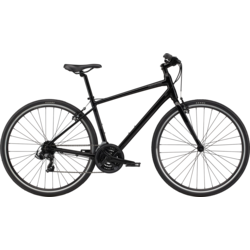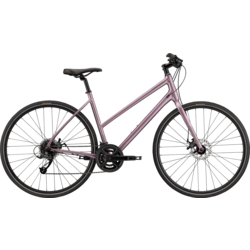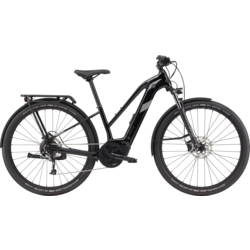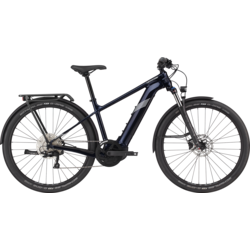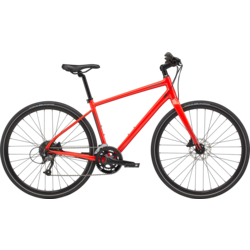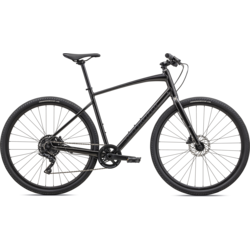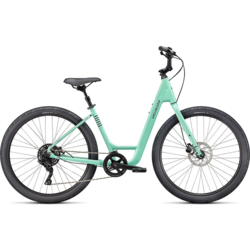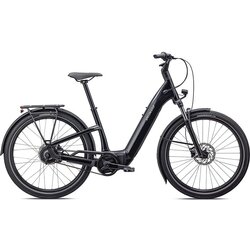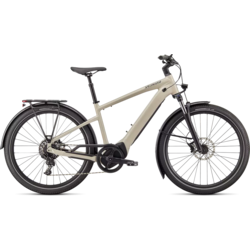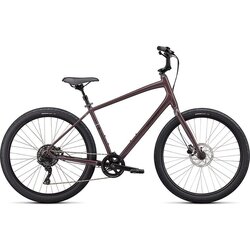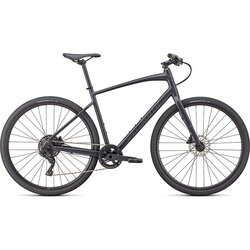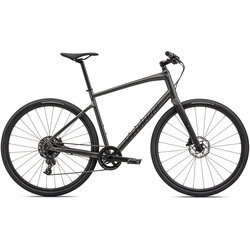Biking for Weight Loss
Biking to lose weight is a long-term commitment like many other exercise routines. Biking doesn’t really benefit you by burning calories fast over a short workout (although it can depending on how you ride), but instead by raising your basal metabolic rate, or BMR. This is the factor that decides how many calories your body burns at all times, doing anything from lounging around on the sofa to sprinting uphill, full tilt. Biking, and many other forms of exercise, benefit you by raising your BMR for long after you’ve finished your workout, and gradually raising its minimum level over a long period of time by building leaner, more efficient muscle tissue. In fact, just 45 minutes of biking in the early to mid-morning (such as a commute to work) is likely to keep you at an elevated BMR all day, which will slowly trim fat over weeks and months, but also help you keep it off as your metabolism changes.
To change your metabolism in this way by biking, especially over weeks, months, or even years, it’s important to ride in such a way that you can get your workout without putting too much strain on any part of your body. Biking is touted as a non-impact activity, meaning your joints don’t bear the weight of your body, the bike does. This is a huge benefit, since it means you can schedule biking exercise whenever possible, without having to worry about also scheduling downtime or switching between different activities to give your body time to recuperate. That’s not to say that biking won’t make you sore or tired, or that your muscles won’t ache in new and interesting ways for the first few weeks – they most certainly will – but at the very least there shouldn’t be any obvious long-term health problems a few decades down the line.
When looking to get the most out of your time while biking, though, everything from the terrain to your posture matters. When you were younger, you might have liked to pedal in short bursts and then coast for as long as possible, but when you exercise, you want to pedal as consistently as constantly as possible. Seek out long, smooth stretches of road, trail, or track where you don’t have to worry about stop lights, pedestrians, or other hazards. When choosing a gear and speed to travel, try to gauge your speed by counting how many revolutions one leg makes per minute. Select a gear where you can pedal at roughly 80-90 RPM for at least 30 minutes. This balance between gear and pedaling provides a good cardiovascular workout without putting too much strain on your joints.
After your first few rides, expect your quads, glutes, and calves to be sore, but also your neck and shoulders. Depending on your riding position, your shoulders now support your entire upper body on the handlebars, and your neck may be craned up slightly more than usual to see ahead. Ease stress on your shoulders by changing your hand positions often while riding, and make sure to ride with shoulders relaxed, rather than hunched and tense. To save strain on your knees (and the bike’s gears) try to shift gears as soon as it is needed, rather than early in advance. When going up a climb, for example, shift gears before you feel yourself starting to struggle at the current gear, not after.
Now that the form is down, it’s time to discuss the content of the exercise routine, meaning the speed and duration of your ride. These are referred to as zones, and two are of interest for weight loss: the fat-burning zone and the high-intensity zone. The fat-burning zone is a long, steady ride at a moderate speed. Maintaining the 80-90 RPM discussed earlier for as long as possible defines a ride in the fat-burning zone. The high intensity zone basically means riding as fast as your legs can pedal, even if it’s only for a short time, in order to get your heart rate up and burn more carbs. The general consensus, though, is to do high intensity interval workouts, alternating between bursts of high speed, as long as you can manage it, and longer recovery periods at a comfortable but moderate speed. Don’t forget that you never stop pedaling during a biking workout, though, so don’t stay in the high-intensity zone for so long that you can’t continue once you dial back the speed. A vast majority of people set specific time intervals for the two zones, such as five minutes in the fat-burning zone and two minutes in the high intensity zone on a repeating cycle. This helps them to exercise more consistently, stick to their goals, and also track their progress as they improve. A short, concise list of different high intensity interval workouts can be found in this article.
Losing a large or small amount of weight is no short order. Achieving a weight loss goal in an effective way takes time, and it’s mostly done by changing your minimum BMR so that you make better use of the calories you take in, rather than burning the required calories to shed pounds of fat in a given time. Losing even five percent of your weight can have a huge and noticeable impact on your health, and it doesn’t matter if it takes weeks or months to do it. It’s definitely worth noting that a solid diet plan will vastly improve the efficiency of any kind of exercise you do, biking or otherwise. Above all else, setting realistic and attainable goals will help you to enjoy your workout, arguably one of the best things to do to help yourself stick to your regimen and lose the weight you desire.

